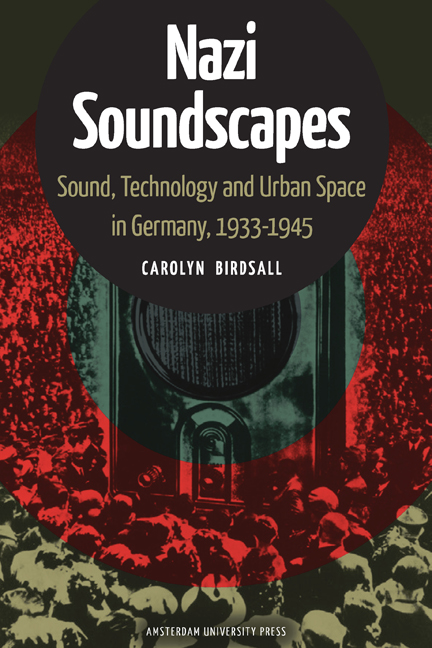Summary
“The state-subsidised radio sets (Volksempfänger) had the purpose of keeping the people acoustically under control.”
“[The songs] were mainly about Heimat, about struggle and loyalty, and ‘we are strong.’ Everything was about Germany being the best and we had to know it. The classroom windows would be opened and we would belt out these songs.”
“When you weren't expecting guests or visitors and the doorbell rang – or someone knocked – you had a nervous feeling: What will happen? Where was I yesterday? What did I say or do?”
“There were air raid wardens, who were each in charge of several buildings. They would go through the streets and call out ‘lights out!’ to the residents.”
During 2004, I conducted a small-scale survey comprised of oral history interviews with Germans who were children and young adults during National Socialism. Among other themes, what emerged in the interviews was their heightened awareness of sound in everyday urban life, particularly during World War II, and the sense of being earwitnesses to that period. These interviews provided a departure point for the current study, inviting further investigation into the implications of sound within Nazi-era control, discipline and terror, and the need to specify the role of radio and mediated sound within fascist aesthetics and cultural practices.
The figure of the earwitness has been introduced in several post-war accounts. Firstly, in the early 1970s, German-language critic and novelist Elias Canetti produced a collection of twenty-six caricatures of personality types, titled Der Ohrenzeuge (1974)/The Earwitness: Fifty Characters (1979). In Canetti's ironic rendering, the earwitness figure has more confidence in heard sounds and the spoken voice, than in images or vision. Canetti's earwitness emerges as an exaggerated stereotype of a passive listener who “forgets nothing,” sneaks around and stores information for the purpose of incriminating others (1979: 43). Canetti's listener could be read as providing an auditory equivalent of the witness as voyeur. This portrayal presents the listening, speaking body in terms of sound recording and transmission technologies, as a “metaphor of memory” (Draaisma 1990; Peters and Rothenbuhler 1997). In this case, Canetti uses his ironic caricature to mock the notion that the recollection of the earwitness involves immediate access to the past.
- Type
- Chapter
- Information
- Nazi SoundscapesSound, Technology and Urban Space in Germany, 1933–1945, pp. 11 - 30Publisher: Amsterdam University PressPrint publication year: 2012



